It was only a matter of time before America’s student protests spread to the UK. In Oxford, tents have been pitched on grass that, in ordinary times, no student is allowed to walk on. The ground outside King’s College in Cambridge looks like Glastonbury, complete with an “emergency toilet” tent. Similar camps can be found at UCL, Manchester University and more. There have been no clashes with police, but that may yet come. In Leeds, for example, pro-Palestinian students tried to storm a university building, leading to bloody clashes with security guards.
From the Sorbonne to Sydney University, the movement has gone global. Its ostensible cause is hardly ignoble. It’s possible to be appalled both by the October 7 attacks and the tens of thousands of Palestinian deaths. It would be inhumane not to share the widespread horror at what is happening in Gaza. And anti-war rallies have, of course, long been part of the student experience, a hallmark of a free society. (I should know: as an undergraduate, I traveled to London to march against the Iraq War.) But the sight of some of the most privileged young people in the West calling for “global intifada” and, in some cases, explicitly expressing their solidarity with Hamas indicates how easily these protests have been instrumentalized for more extreme causes.
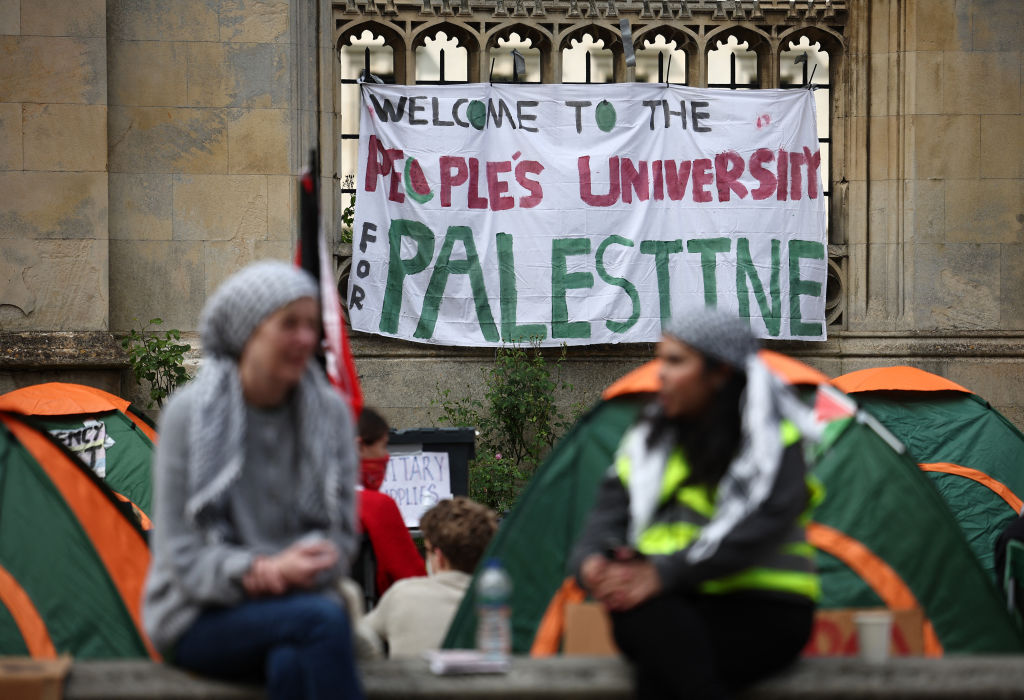
The recent escalation started when Minouche Shafik, the politically savvy president of Columbia University in New York, sought to make clear that antisemitism has no place on campus. She’s an economics professor whose CV includes important stints in government, running the UK’s department for international development as a permanent secretary and serving as a crossbencher in the House of Lords.
When called to give evidence to Congress at the end of April, she didn’t want to repeat the mistake of her colleagues at Harvard and the University of Pennsylvania, who had so egregiously failed to take a firm line on antisemitism a few months earlier that they found themselves out of a job. She vowed to enforce her university’s rules with a firm hand. But students determined to challenge her authority responded by erecting tents on Columbia’s campus. When Baroness Shafik delivered on the vow she had made to Congress by calling in the NYPD to clear the encampment, she set off an even bigger protest movement. Copycat encampments quickly spread to around fifty American universities and beyond.
For the most part, protesters pitch tents in common spaces on campus, limiting themselves to chanting slogans meant to shock and provoke. At many universities they’ve also occupied administrative buildings or prevented classmates from moving around campus or going to the library. In response, a growing number of American university presidents have called in the police: more than 2,000 protesters — many of whom turned out to be outside agitators with no university connection — have been arrested.
When students rebelled in the 1960s they embraced plenty of dumb and dangerous causes, from Fidel Castro to the Cultural Revolution. But their anger proved long-lasting in part because so many had skin in the game. They chafed at open censorship on college campuses and the strict restrictions on their sex lives. Most importantly, many had good reason to fear being conscripted into fighting America’s disastrous war in Vietnam.
Today, students are once again horrified by a bloody conflict in a faraway land. This hurt goes especially deep for students who have links to the region, though most protestors lack such a personal connection. Unlike in 1968, none of them have to fear being conscripted into taking part in the conflict. And it is the scions of the white middle-class who seem especially prone to the most radical and nihilistic forms of oppositional politics. Key organizations supporting the protests, such as Students for Justice in Palestine, explicitly celebrated Hamas’s terror attack in the days following October 7.
There’s another contrast between 1968 and today. Back then, the establishment the students were targeting felt a responsibility to uphold order and defend tradition. Nowadays, many professors and administrators see themselves as the natural inheritors of the student movement. Many leading universities describe the events of 1968 with a mix of pride and nostalgia and actively market themselves as great places for political activism. A New York University website targeting prospective students, for example, features a three-part series about how they can learn “what progressive change is like in action.” Many universities offer scholarships explicitly targeted at activists and admit students in recognition of their high-school activism. Once students arrive on campus, they find that a majority of staff locate themselves far to the left of the average citizen.
This helps explain some absurdist moments we’re seeing. Protesters who had occupied a key administrative building at Columbia held a press conference demanding that administrators deliver food and drink to them. When a surprised journalist asked why the university should have such an obligation towards people engaged in blatantly illegal activity, she insisted they had a moral right to “basic humanitarian aid.” We saw similar developments at British universities, with student unions giving out free drink vouchers, and protesters demanding the institutions against whom they are ostensibly rebelling keep them warm and comfortable.
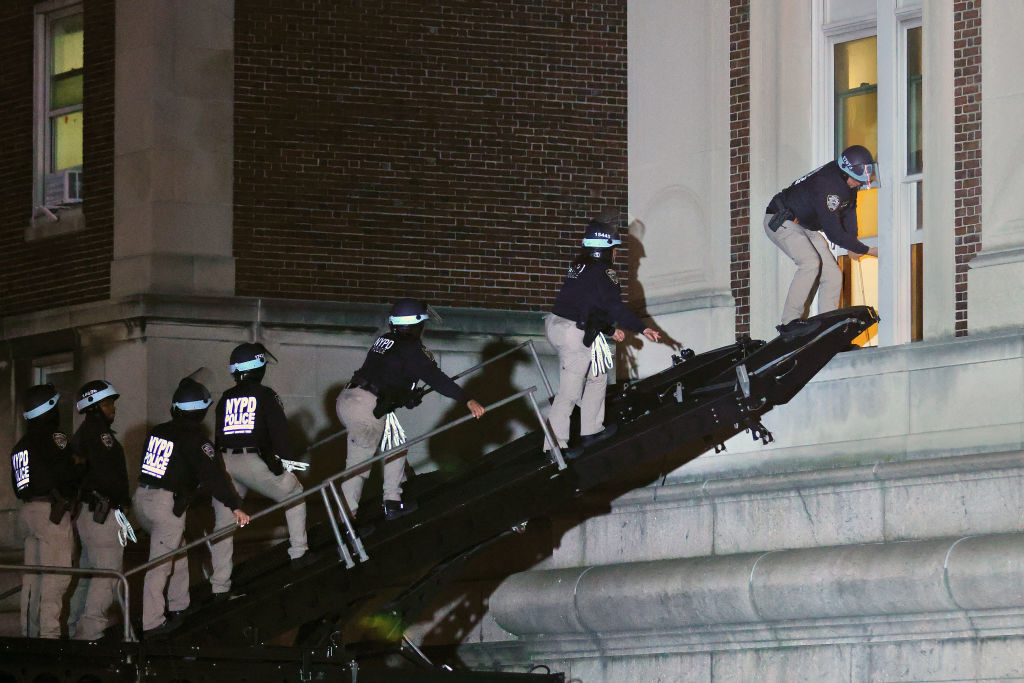
Protesters who have occupied university buildings and yet expected administrators to deliver dinner to them may have fallen prey to delusion; but if so, it’s one that their universities have proactively nurtured. At Oxford, for example, nearly 200 dons expressed their solidarity with the encampment, describing it as “a public-facing global education project.” When powerful constituencies within the university celebrate students for breaking its rules, it’s hardly surprising that students might feel betrayed when they suffer punishment or face arrest.
Every parent knows that the best way to enforce rules on their children is to be clear and consistent: children need to know exactly what they are and aren’t allowed to do. And when they break the rules, consequences should follow.
Universities have in recent years increasingly acted in loco parentis, treating students as children who need to be cajoled, indulged and most often of all mollified. (That mollification explains how the student editors of the Columbia Law Review can earnestly urge the school to cancel exams because the police’s “violence” in clearing their encampment left them “irrevocably shaken.”) But especially when it comes to free speech, the rules universities have set are deeply inconsistent and the consequences for breaking them erratic.
When you stray from principle when times are calm you have nothing to fall back on in times of crisis
Universities claim to follow two sets of rules concerning free speech. To ensure academic freedom, students and faculty members are supposedly entitled to engage in controversial speech, even if many consider it offensive. Especially in the US, which has a more absolutist culture of free speech, this has traditionally extended to positions, such as a denial of the Holocaust, that would in some European countries be illegal.
The second set of rules is meant to uphold public order on campus, making it possible for students with widely divergent views to get along. No student has a right to stop their classmates from attending the lecture of a controversial visiting speaker, to occupy the president’s office or to destroy the university’s property as part of a protest. The tradition of free speech has never included a right to exercise the heckler’s veto.
The problem is that universities on both sides of the pond have failed to honor or enforce these rules. In particular, they’ve become far too restrictive when it comes to controversial speech — and far too lax when it comes to punishing blatant rule-breaking.
MIT disinvited a speaker who was going to give a talk about climate change because he opposed affirmative action. Harvard allowed one of its departments to hound out a lecturer because she publicly professed her belief in the existence of biological sex. NYU now prints a phone number on its student IDs that encourages community members to call a bias response team in case they overhear a “microaggression.”
The double standards which have resulted from this are evident. For example, a Columbia student went on a daft rant a few years ago, talking drunkenly about why “white people are the best thing that ever happened to the world.” He was immediately condemned by the university and even banned from parts of the campus. And yet, five years later, the university tolerates hundreds of students chanting slogans that glorify and even call for violence, such as “globalize the intifada.”
At the same time, many universities have signaled to their students that they will never seriously discipline them for shouting down classes, occupying campus buildings or tearing down statues of controversial historical figures. Calling the police on protestors has, at many universities, become altogether taboo even when they clearly violate the law. And so the past decades have seen a steady rise in disruptive forms of protest on campus.
Events by visiting speakers couldn’t go ahead due to the threat — or the reality — of violence. Some university presidents accepted that students would lay siege to their offices for weeks or months on end. During the Occupy Wall Street movement, tent encampments popped up, and stayed put for weeks, on multiple campuses. In Britain, students have similarly felt emboldened to break the most basic rules set by universities. At the beginning of March, for example, a group calling itself Palestine Action proudly shared a video of one of its members spraying red paint and slashing a painting of Lord Balfour at Trinity College, Cambridge.
As the situation grew ever more volatile — and, in some places, violent — university presidents attempted to restore order through negotiation, the threat of expulsion and finally the police. For the most part, long-standing university rules, and even the principles of free speech, entitled them to take these actions; but since they had for so long established the norm that students can break rules and occupy university buildings at will, many pro-Palestinian protestors understandably perceived this as heavy-handed and hypocritical.
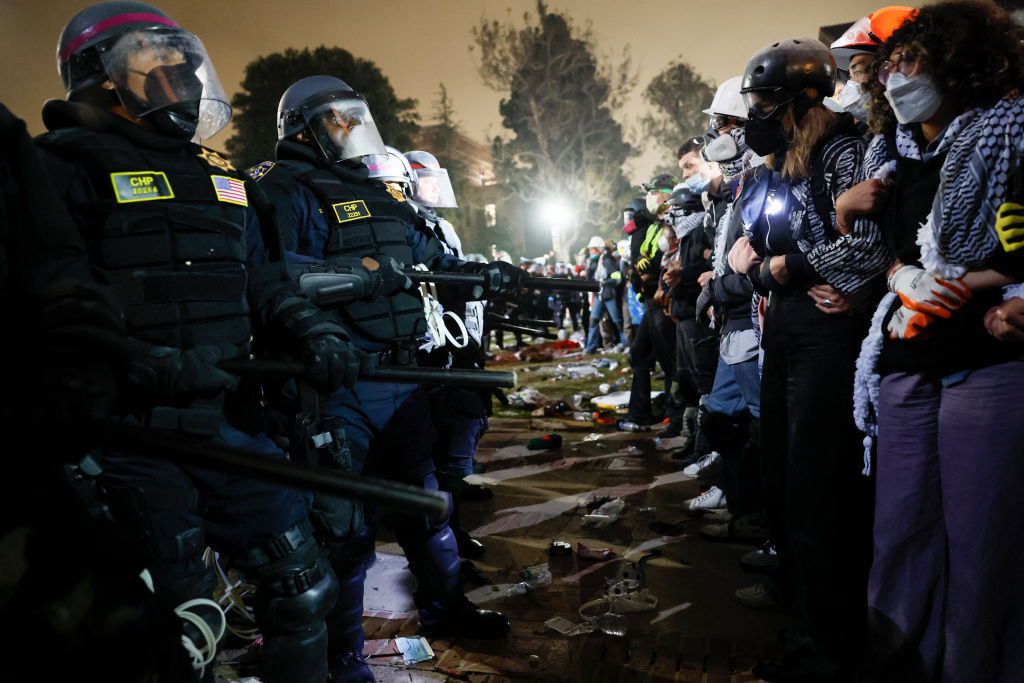
One of the many problems with straying from principle when times are calm is that you have nothing to fall back on in times of crisis. Since October 7, universities have achieved the seemingly impossible: giving both Jewish and pro-Palestinian students reason to feel that they have been treated unfairly. Over the past months, Jewish students understandably felt abandoned because they alone had to endure hate speech targeted at their group without administrative intervention. Now, pro-Palestinian protestors feel unfairly targeted because, in a breach of recent precedent, their encampments have, in some instances, been broken up by the police.
To avoid similar omnishambles in the future, universities should publicly commit themselves to upholding both free speech and public order. But it’s probably too late for principle to save them from their current troubles. For now, they’re condemned to look like hypocrites whatever they do — because, due to the failures of the past few years, they are.
With the Israeli military advancing in Rafah, the protests may grow in size and become more unruly in the coming days and weeks. And yet, it seems unlikely they will last forever. That’s partially because university leaders have grown surprisingly willing to call upon the police to end illegal encampments. But it’s mostly because, in a few weeks, the academic year will end at many universities — and most student activists don’t want to cancel the exciting trips they have planned or to forgo prestigious summer internships.
This year will most likely not turn into a rerun of 1968. But, at least in the US, there may turn out to be one important parallel. At the end of that tumultuous year, Richard Nixon, promising to put an end to the disorder in the country, beat Hubert Humphrey in the presidential elections. At the end of this year, Donald Trump, taking a page out of Nixon’s playbook, may just succeed in repeating the same feat.
This article was originally published in The Spectator’s UK magazine. Subscribe to the World edition here.



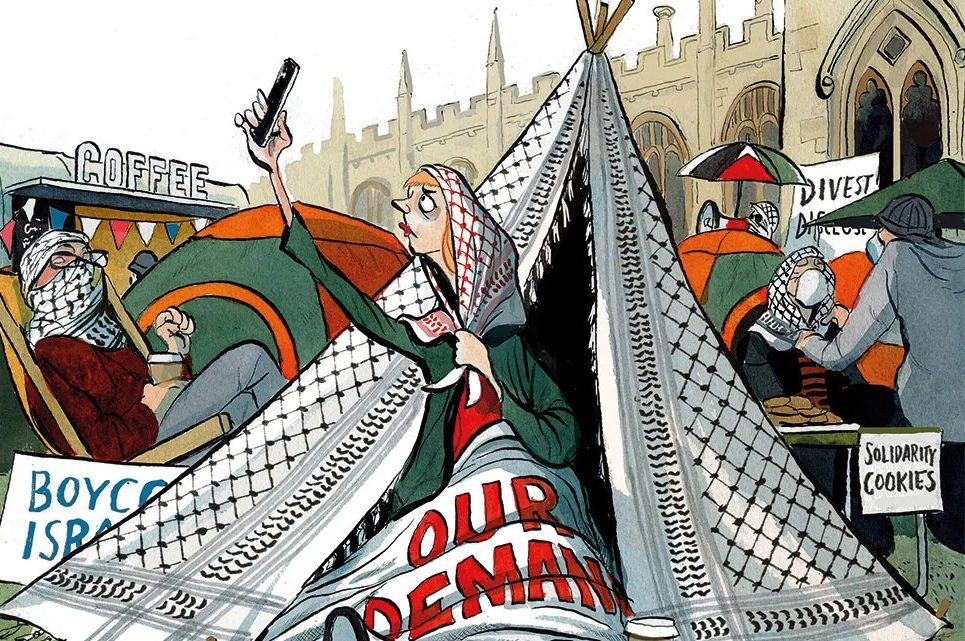








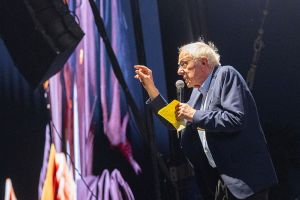
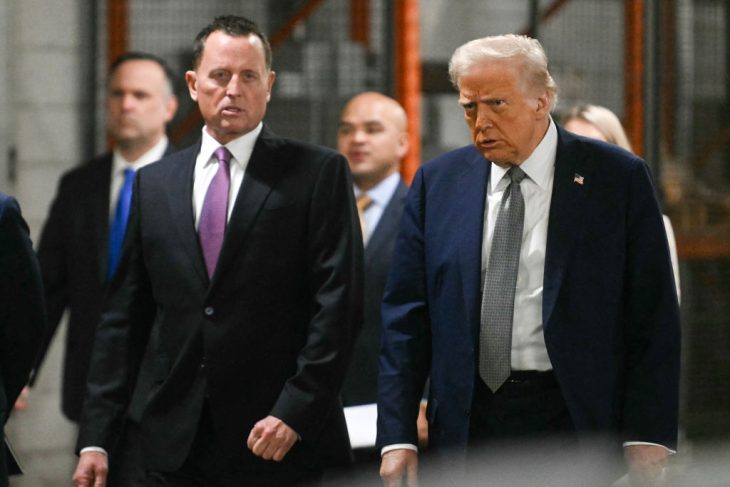

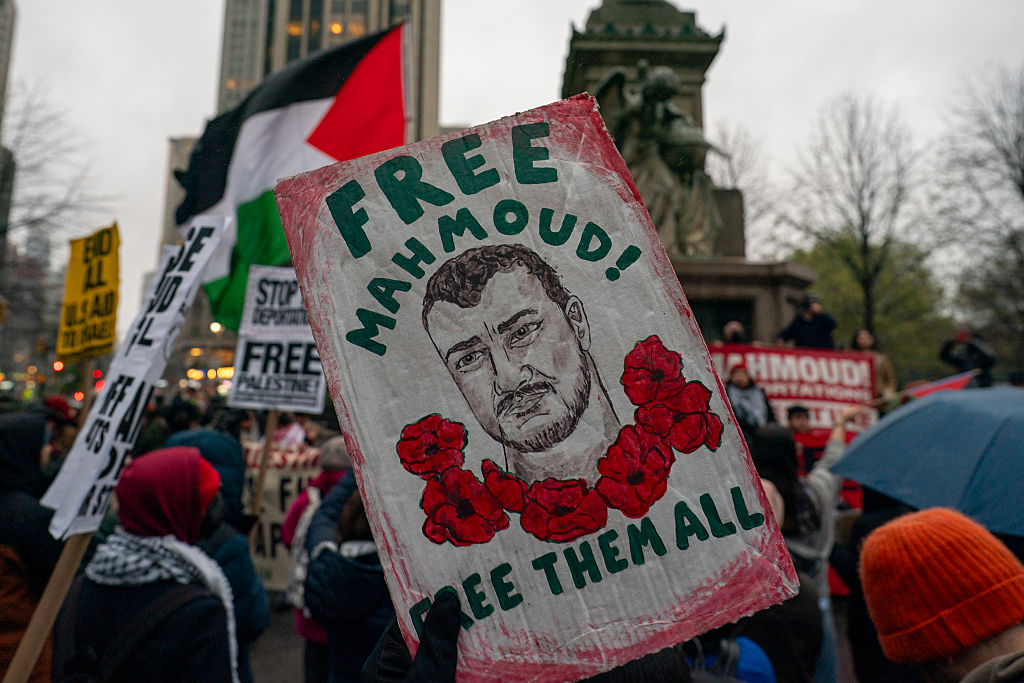


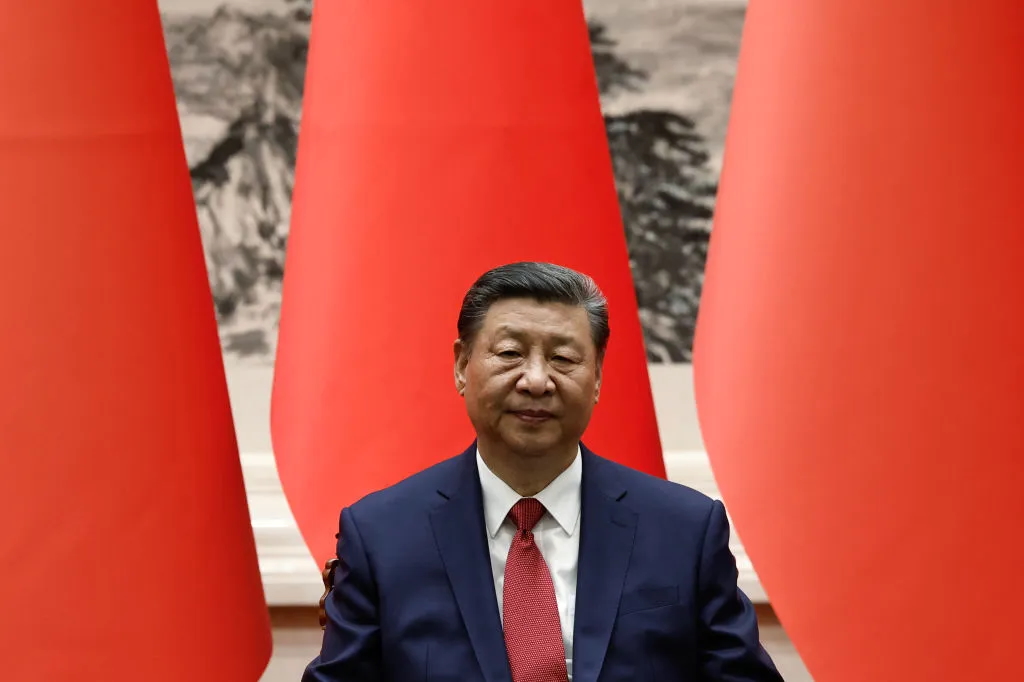







Leave a Reply